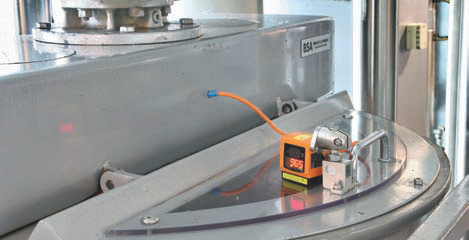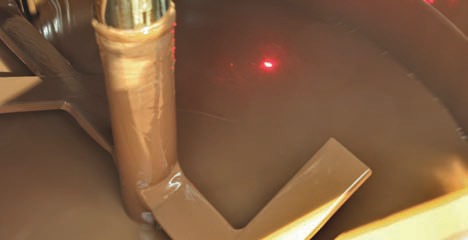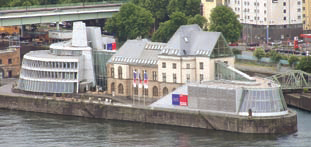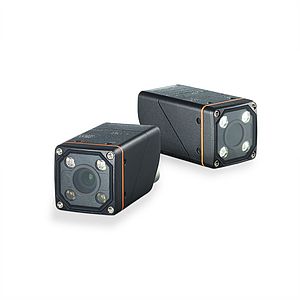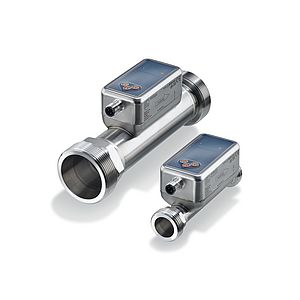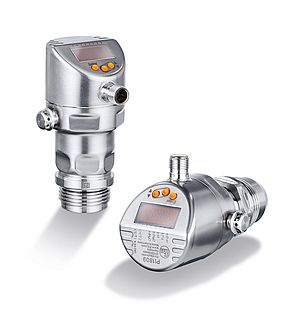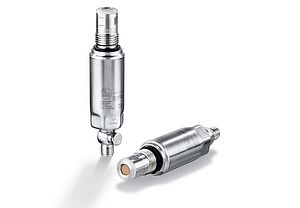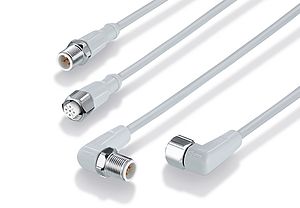At the Chocolate Museum in Cologne, Germany, a non-contact laser distance sensor looks into the tank with liquid chocolate through a Perspex window and determines its level. The Chocolate Museum in Cologne lets its visitors savour the sweet taste of chocolate. In 1993 the museum was founded and financed by Dr. Hans Imhoff, former chairman of the supervisory board of the long-established Cologne company Stollwerck. Today it is an independent museum. It gives the visitors an exciting insight into various aspects of the history and present of cocoa. The exhibition presents the history of chocolate over 3000 years: from the Olmecs, Maya and Aztecs to the present including the production of this “ambrosia” using state-of-the-art sensors. The visitor can closely follow the production process from the cocoa bean to the finished chocolate in the mini production facility. The facility consists of a complete unit to process the cocoa beans - from roasting, breaking and grinding to the mixed, rolled and conched chocolate mass. This complete production line with storage tanks, tempering machines, moulding machines and packaging unit lets the visitors smell the scent of chocolate in the air. About 400kg of finished goods are produced here every day for sale. Since July 2006 ifm electronic has worked with the Chocolate Museum. In the production process of the mini facility state-of-the-art sensors were installed. One year later a price was awarded to this cooperation by the initiative “Germany - Land of Ideas”. In the Chocolate Museum the visitors experience with all their senses what is necessary for chocolate production. For example vibration sensors, temperature sensors or cylinder sensors from ifm electronic monitor the production. Since very recently laser distance sensors type efector pmd are detecting the level of liquid chocolate in all three storage tanks involved in the production process. So far overflow monitoring had been ensured by means of a contact probe. As soon as the probe enters the chocolate mass, the controller receives a signal and the filling of the tank is stopped. In the past, the contact probe used to be in direct contact with the medium to be detected. For level monitoring the Chocolate Museum now additionally uses efector pmd, an optical distance sensor. “The advantage of this unit is that it operates without contact, ideal with regard to HACCP regulations”, says Hermann Jansen, production engineer and HACCP officer of the Chocolate Museum (HACCP = Hazard Analysis and Critical Control Point concept). Two switching outputs can be parameterised via the user-friendly teach mode. “The sensor now assumes the tasks of level monitoring and ensures that the storage tanks do not overflow or run dry”, Jansen continues. Each of the three storage tanks is monitored by an efector pmd, directly mounted on the plastic lid of the tanks using an E2D101 clamp. To avoid reflections of the plastic, the sensor with its lens lies flat on the plastic lid. The sensor measures the distance between the tank lid and chocolate mass to the nearest millimetre. The measured distance is indicated on the 4-digit display and provided via the scalable analogue output (4…20mA). “The empty state of the tank displayed in millimetres helps with the monthly inventory taking”, explains the production engineer. “The production people have a conversion table to convert the chocolate volume in the tank into kilograms”, continues Hermann Jansen. So pumping off or estimating the “remaining” chocolate in the storage tank is not necessary to take inventory. The efector pmd operates to the time-offlight principle. Receiving element and signal evaluation are integrated on a single silicon chip, called a photonic mixer device, in short PMD. This enables a very small dimensioning of the housing, of just 42 x 42 x 52 mm and are therefore ideal for the mini production facility. The chocolate is temporarily stored in the storage tanks at a temperature of 50°C. To ensure a constant temperature, the dual-wall storage tank jackets are heated with warm water. The integrated agitator additionally avoids solid chocolate particles from depositing on the tank wall. Via a small buffer tank holding 400kg chocolate the chocolate flows into the two large storage tanks with a holding capacity of 800kg each. “The production line is in operation for 7.5 hours six days per week. The daily production requirement is about 400kg chocolate so that the tanks must be completely refilled every other day,” says Hermann Jansen. With a chocolate bar weight of about five grams the Chocolate Museum produces 80,000 bars every day. Via dual-wall heated pipes the liquid chocolate flows from the storage tanks to the tempering system where the liquid chocolate is cooled then reheated during the tempering process to achievethe correct crystals and necessary processing temperature. The temperature depends on the recipe and is controlled to a tenth of a degree. Tempering ensures that the finished chocolate has a glossy shine and a sharp edge and that it will set once deposited in the mould and then cooled. The tempered chocolate is pumped through a jacketed pipe system from the tempering machine to the moulding plant depositor hopper which then deposits the chocolate into preheated moulds with a precision of one tenth of a gram. After filling, the moulds move over a vibrating table so that the chocolate mass spreads evenly and air bubbles can escape. The moulds pass through the subsequent cooling process in 25 minutes. At the end of the facility they are turned and shaken out on a conveyor belt. At the end of the production line a gripper takes the bars and feeds them to the packaging line. If the gripper is not in operation, the chocolate bars fall onto a second belt conveying them to a collection vessel or are conveyed to a remelt tank system where any waste chocolate bars are mixed and heated, remelting them to liquid chocolate for re-use back in the process. A forth efector pmd distance sensor detects the exact level of the collection vessel so that the chocolate mass cannot overflow. Here again the advantages of the extremely compact design are evident. The efector pmd can be easily installed requiring only little space onto the collection vessel. Via a pipe system the liquefied chocolate flows back to one of the 800kg storage tanks and can be fed back to production.
Non-contact level detection at chocolate museum
A non-contact laser distance sensor looks into the tank with liquid chocolate through a Perspex window and determines its level.
- by ifm electronic gmbh
- April 12, 2010
- 473 views


